The first time I heard about baobab trees was in my biology class when I was a child. From that initial knowledge acquired in my childhood, the name “Baobab” has intrigued me and nurtured an interest in these legendary thousand-year-old trees, inspiring me to explore extraordinary lands across the globe.
[rpi]
RELIVING CHILDHOOD DREAMS
I gradually forget my dreams of baobab trees and the story of The Little Prince (by French writer – Antoine De Saint-Exupéry) and got stuck on the treadmill of life. Until one day, I saw a picture on Instagram of my Puerto Rican friend, he was walking barefoot on a dirt road with 2 rows of giant trees on either side at the Avenue of Baobabs. At that moment, I felt an electric shock run through my body and the dream of hugging the giant trees and whispering: “Hey you, you are so special, I have waited so long for this day” was awoken in me.
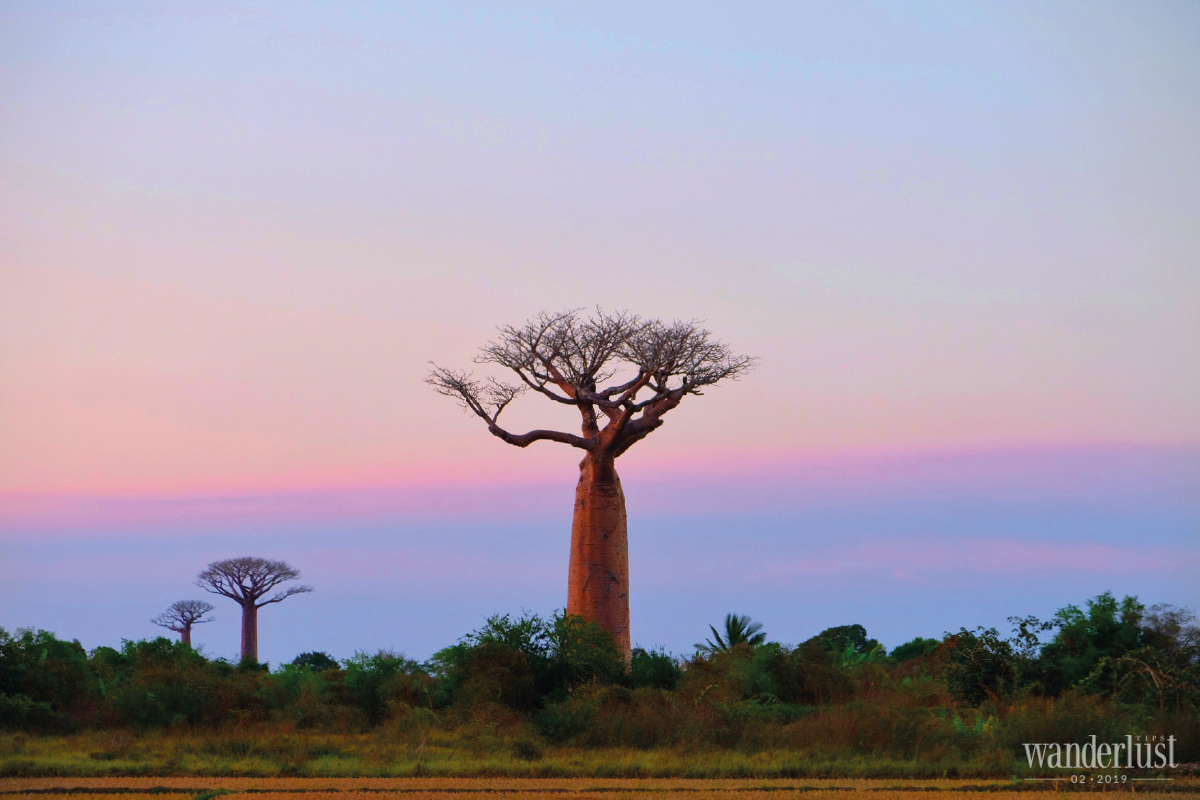
Without hesitation, I quickly searched for information about the journey to touch my dream of baobab trees at The Avenue of Baobabs located in Morondava, Madagascar. It would take quite a lot of time to fly to from Vietnam and I didn’t have many options in terms of different flight routes either. I was only sure that the capital of Antananarivo would be my first destination in Madagascar, then I would travel to Morondava. I had visited Egypt once before, a country in North Africa, but I had never made my way to any countries in West Africa. Therefore, this time, I decided to make plans to travel from HCMC to Nairobi – the capital of Kenya then to Antananarivo – the capital of Madagascar and on to Morondava – my final destination where the baobab trees were waiting for me.
After a 3 hour flight from Nairobi, I arrived in the capital of Antananarivo. Only staying for 1 night, the next morning, I was on my way to the land of the magical baobab trees. My car brought me through hills, villages and towns and on Friday afternoon, I arrived in Morondava. In the dry season, baobab trees shed their leaves and look as if they have been planted upside-down, as from a distance, the bare and spreading branches of the Baobab look like roots sticking up into the air.
The car kept moving, suddenly, I saw the giant baobab trees standing on the roadside, right next to my car. At that moment, I was bursting with happiness as after such a long journey, for the first time, I saw a real baobab tree. Nature rewarded me with a beautiful sunset as the red sun slowly went down beyond the horizon. The road was empty and the baobab trees appeared so majestic in the golden honey sunset, it was a natural light spectacle I’ll never forget, washing away all of my tiredness. However, on that afternoon, I could only see a few baobab trees along the national highway before darkness came and I had to save the Avenue of Baobabs for the next day.
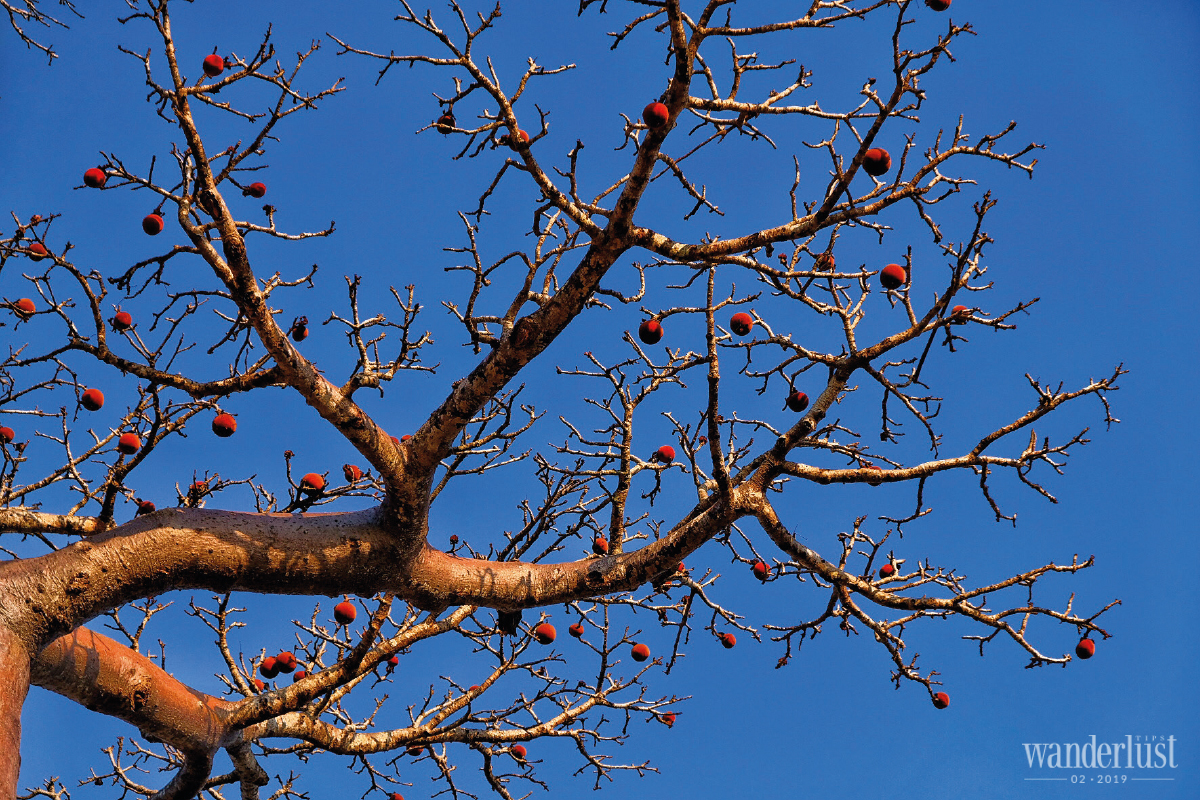
THE GREAT PERFORMANCE OF THE BAOBAB TREES
I hardly slept at all that night as I got so excited when thinking about walking in the middle of the two rows of giant African baobab trees. I woke up early and left the hotel at 4am, it was still dark except for the streak of light coming from my car. The road to the Avenue of Baobabs was little bumpy and I was filled with anticipation. Then, I gradually saw one and then two baobab trees on the roadside.
When we arrived at the Avenue of Baobabs, stopping in the parking lot, I got out of the car and ran straight to the Avenue. I breathed in the cool air of the early morning and waited for the first light of the day to reveal the great performance of the baobab trees. 10 minutes passed and in the thin shimmering mist which appeared like a sparkling performance gown, the baobab trees were the stars of the stage, they were magically spectacular and imposing. I have never seen anything so magnificently gorgeous! I felt like I had found an incredibly precious treasure and that I was a passionate explorer.
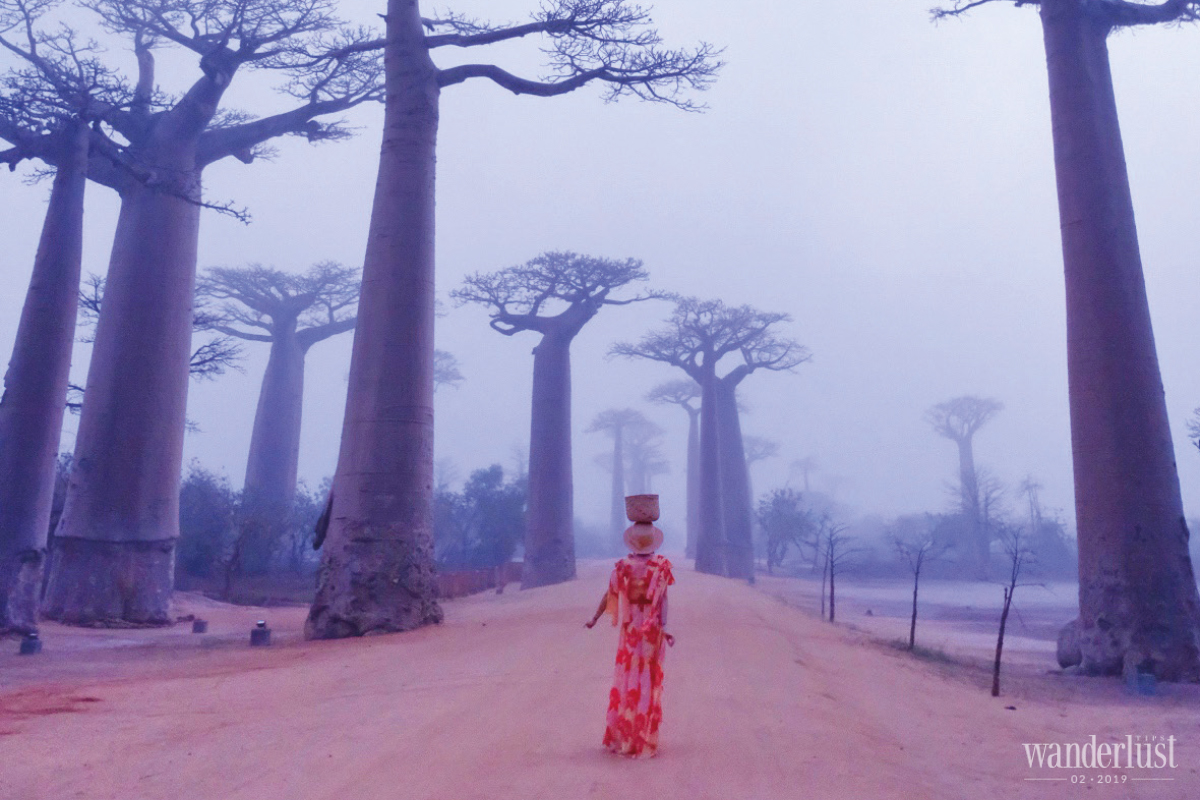
The Avenue of Baobabs is 250 metres long, lined by over 25 giant baobab trees on each side and surrounded by many other kinds of trees though not standing in line. I kept walking along the road over and over again like a curious kid visiting Jurassic Park for the first time, touching the trees, hugging and caressing them. In the dry season, the joke of the ancestors of the Malagasy people seemed to come true: the Creator planted the baobab trees upside down with their roots sticking up in the air. From a distance, the green-brown velvety pod-shaped fruit at the top of the trees made them more vivid and strange looking. I admired them from one side to the other for a while. How beautiful! How stunning!
There are eight species of baobab tree in the world, and 6 of them only grow in Madagascar. Depending on their age, the baobab trees have different sizes and heights and locals say that the trees only grow 8 centimetres every 10 years. Therefore, some baobabs may look small but they are already many years in age while the giant ones which are about 30 metres have to be a thousand years old and even some can live to be 3,000-4,000 years old. Their roots are 50 metres long, but only lie 2 metres underground and they spread as widely as possible to increase their chances of absorbing the little amount of rainwater that soaks down into the soil. This water is then stored in their trunks, an ordinary tree can only consist of about 27% water while the baobab tree reaches 76-79%, which is a lot! However, the trunks of baobab trees are soft, so they are used to make strong fibres and dye and for firewood while the bark is used to make rope.
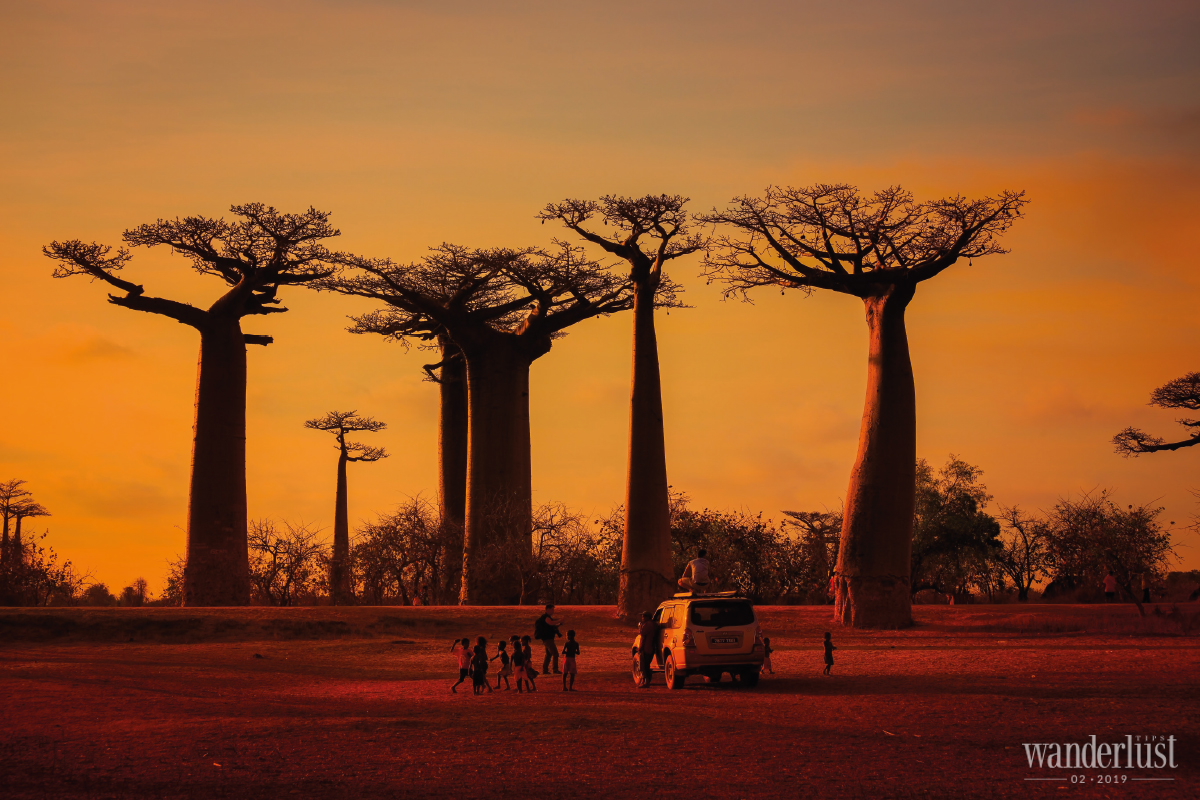
I returned to the Avenue of Baobabs several times to watch the sunset. Though a lot of baobab trees can be found in Morondava, only on the Avenue of Baobabs do they grow in rows, creating its beautiful scenery. The Avenue of Baobabs is a hidden gem which is arousing the interest of travellers and becoming a “new destination of the year” and attracting more travel enthusiasts and those who have a passion for exploring extraordinary destinations. Witnessing the sunrise and sunset on the Avenue of Baobabs has been the most stunning experience in my long voyage to 60 countries. And how about you, are you willing to make the long journey to admire this generous gift from nature?
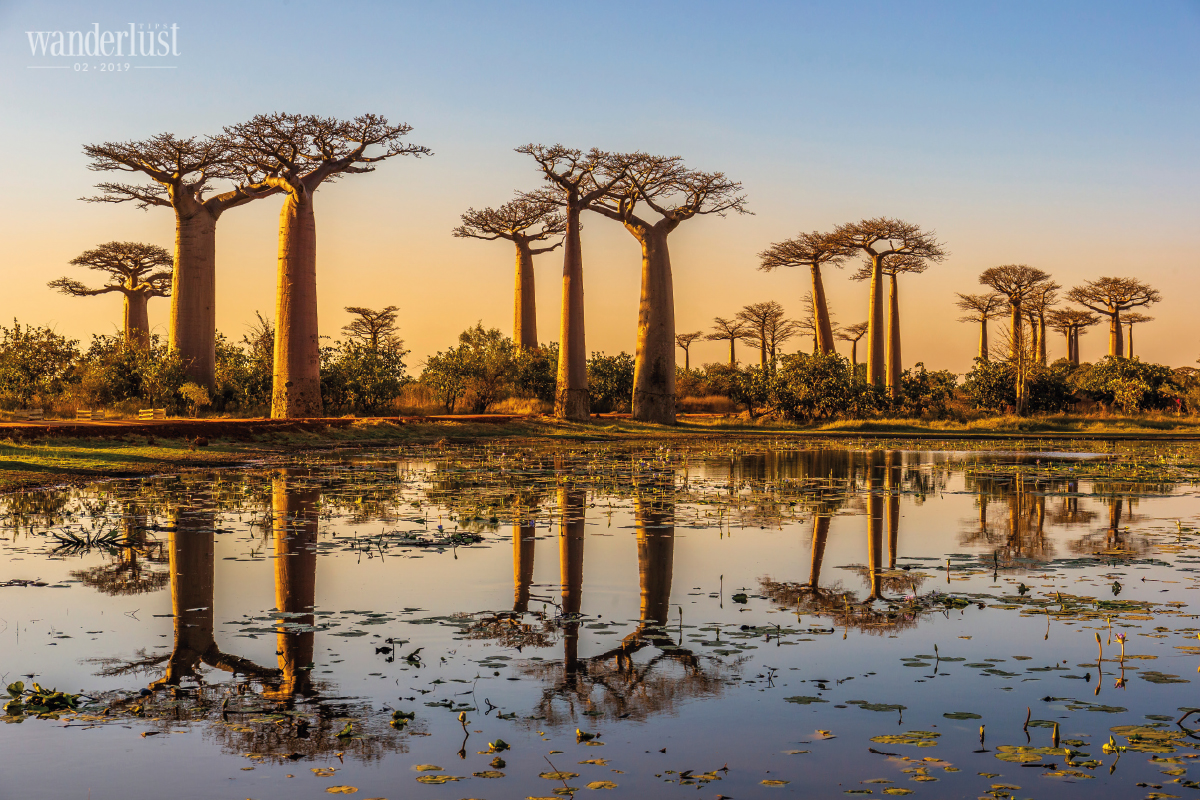
W.TIPS
TOURIST VISA
Madagascar issues visas on arrival for Vietnamese passport holders. The tourist visa fee for a 30-day stay is about USD37 (~VND860,000).
TRANSPORTATION
There are many ways to travel from Vietnam to Madagascar, but I chose to fly from Ho Chi Minh City (Vietnam) to Nairobi (Kenya), then take a flight to Antananarivo (Madagascar).
From Antananarivo to Morondava where the Avenue of Baobabs is located, you can take a one-hour domestic flight or travel by car for two days and one night. The road is not too bad, but it is quite zigzagging and undulating through the hills and there is no electric street lighting along the road. Travelling the 660 kilometres from Antananarivo to Morondava in the above conditions can be quite challenging and hence why it is a two-day and one-night journey. The most common itinerary is Antananarivo – Antsirabe (170 kilometres) on the first day and Antsirabe – Morondava (490 kilometres) on the second day. Madagascar’s towns are relatively rudimentary and far from each other, and the roads do not allow for cars to travel at high speeds, so it is reasonable to divide the trip and take a break in Antsirabe. I wanted to admire the nature and the daily life of the people in Madagascar, so I decided to hire a car, a driver and travel on the road.
BEST TIME TO VISIT
Madagascar has a subtropical climate and every season bears its own beauty. However, it is recommended to visit during the winter time which is also the dry season when the weather will be more predictable and there are fewer storms.
Winter is from May to October, at this time the road is dry and the sky is clear, meaning we can watch the beautiful sunset and sunrise. This is also the time when the baobab tree is bare of leaves and may have fruit. The Avenue of Baobabs is a dirt road and during this season there is no rain so it is only dusty and not muddy. The lake by the Avenue of Baobabs is dry during winter, so you can walk out onto it and in September the view of the sunrise is very beautiful when watching from the lake. However, in September, looking from the lake across the highway, the sun goes down to the left side of the Avenue (behind the roofs of a few houses and groves) and does not fall behind the baobab trees.
Summer lasts from November to April. At this time, the road at the Avenue of Baobabs may be muddy on rainy days. The Baobab trees are green in this season and the nearby lake is full of water, so visitors can capture impressive images of the reflections off it. In particular, this is the most beautiful time to witness sunset as the sun sets directly behind the baobab trees.
CHOOSING SUITABLE CLOTHING
It is recommended to wear bright-coloured clothing with large colour patterns. You can wear accessories such as hats made of environmentally friendly materials, especially the typical Madagascar raffia hats that you can buy in shops along the road.
If you want to look like a true local, you can buy the baskets which people here often carry on their heads. In addition to the baskets, the stores also sell lengths of cloth shaped into a ring or ball which is needed to carry loads using the baskets. With all the necessary tools, you can act like a local, carrying a basket on your head.
TIPS TO CAPTURE THE AVENUE OF BAOBABS IN THE DRY SEASON
To capture the moment of sunrise, you should arrive from 5am. At this time it is still foggy and the avenue is almost deserted. At about 6.15am, the sun starts to rise up over the lake, the early morning light splashed over the baobab trees. At this moment, you should be standing at the lake to capture the rows of baobab trees and avoid a silhouette. Around 7.30am, the sun is high and though the view from the beginning to the end of the avenue appears ethereal, it is opposite the sun. Therefore, the best time to take photos is from 5.15am to 7.15am, after that time, a lot of tourists and locals will arrive making it hard to take beautiful pictures.
To capture the sunset, you should go to the Avenue of Baobabs from 6pm. However, at this time, the avenue is often quite crowded with tourists and local people, so it is relatively difficult to have photos taken between the two rows of beautiful baobab trees.
CUISINE
Try the fruit of the baobab trees but don’t eat too much because the high vitamin content of this fruit can upset your stomach. The fruit is brown and as big as a large melon with a hard smooth outer shell. Malagasy people use a piece of hardwood or a wooden statue of the baobab tree (the souvenir) to break open the fruit. Inside the hard shell, there is the white part but only the flesh surrounding the seeds is edible or can be used to make soft drinks. One fruit has many seeds which are a little tangy with an almost citrusy kind of flavour. The Malagasy people in the Morondava region love the baobab fruit and they buy and sell a lot of baobab fruit in the market.
OTHER ATTRACTIONS
There are many other interesting attractions near the Avenue of the Baobabs such as the Baobab Lovers – two enormous Adansonia za baobabs which have grown to become entwined together.
On the way from Antananarivo to Morondava, you can visit Lake Tritriva – a lake at the mouth of an extinct volcano near the city of Antsirabe.
Watching Lemurs is also very interesting. This is a typical animal native to Madagascar found in national parks and private reserves.
Duong Thanh Tu | Wanderlust Tips

